Worms, an often invisible threat
Worms are internal parasites and a common problem in our pets. Infection can be transmitted very easily. For example, did you know that worm eggs can actually be found everywhere in your area? For example in parks, on the street and in sandpits. Tapeworms are transmitted by flea, and eating a bird, snail, or mouse is also not without risk. And now you may be thinking, "My pet won't go out so it doesn't bother me," but unfortunately, you can also easily bring worm eggs into your home through your shoes or clothing and infect your pet. In short, an infection is in a small corner.
Unfortunately, worms are almost always an invisible problem. Your pet will ingest worm eggs, which will grow into adult worms in the body without you being aware of the process. The importance of deworming is therefore often underestimated. It is only when your pet is severely infected or weakened that it becomes apparent that it is a worm infection. But again, prevention is better than cure. Protection against insects inside is therefore at least as important as protection against insects from the outside.
Worms in detail
After reading this information, you must be wondering what a worm looks like now. We have therefore focused on the two types of worms that are common:
Roundworm
Roundworms are large white worms with a tubular body. The most important roundworm is the roundworm. It is a few millimeters thick and about 15 to 35 centimeters long worm.
Tapeworm
Tapeworms look like long, flat ribbons and can range in length from a few millimeters to 2 meters. They consist of a head, a neck, and a multitude of limbs filled with dozens of tapeworm eggs. When these limbs become detached, they are often found at the level of the anus, in the fur, or in the form of "grains of rice" in the basket.
Invisible, isn't it?
In healthy adult animals, the worm infestation usually causes no symptoms. However, since they carry worms, these animals excrete worm eggs in their faeces. This in turn poses a danger to other animals, but also to humans. The following symptoms may be possible in severely infested or weakened animals:
-
Outbreaks of worms or worms in the stool
-
weight loss and/or growth retardation
-
anemia
-
Dull fur
-
Reduced resistance
-
Anal stimulation (e.g. "sledding") - in the dog
-
To throw up
-
diarrhea or constipation
-
Cough, mortality (usually in young animals) - in the dog
Harmful to my pet, what about me?
People don't usually get sick from worm infestations, but when they do, the consequences can be serious. The larvae of the worms can get into the eyes, lungs and skin, for example, and cause damage there.
Children in particular are at increased risk of accidentally swallowing these eggs after contact with contaminated soil or extensive contact with pets.
Children with a predisposition to allergies or asthma can suffer more from asthma or allergic symptoms after infection with roundworm larvae. (1)
Worm prevention tips
Personal Hygiene: Wash your hands with soap and water after petting, feeding, cuddling, or other contact with animals, their roost, or feces. Also keep this in mind after playing outside or working in the garden. Keep nails short to prevent debris from getting behind the nails.
-
Reduce the risk of your pet being infected through food. Therefore, be careful when administering raw meat.
-
Environment: Clean up your dog's poop daily and throw it in a trash can. Always take a dog poop bag with you on walks. Clean the litter box regularly and dispose of the feces in a trash can.
-
Control: Check the faeces regularly for worms. If in doubt, consult your veterinarian.
-
Do not eat unwashed wild berries, they may be contaminated with worm eggs.
-
Children: Be aware that they are exposed to a potentially unsanitary environment. Cover sandboxes and prevent animals from entering the sandbox.
-
Prevent Fleas on Your Pet: Fleas can transmit tapeworms. If your pet suffers from fleas, treat them for tapeworms as well.
-
Avoid contact with stray dogs, cats and foxes.
In addition to the above measures, it is also very important to deworm your pet regularly. The independent organization ESCCAP recommends doing this at least four times a year.
1: Aspects of Toxocara epidemiology in the Netherlands, Overgaauw P., September 1997
This text was translated by a translation machine
 Horse Pharmacy
Horse Pharmacy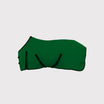 Rugs
Rugs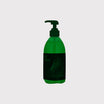 Care
Care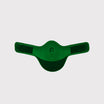 Saddle and Attachments
Saddle and Attachments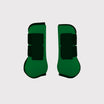 Leg Protection
Leg Protection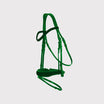 Bridles
Bridles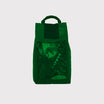 Feed
Feed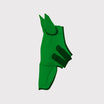 Fly Masks
Fly Masks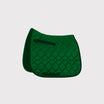 Saddle Pads
Saddle Pads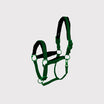 Headcollars and Ropes
Headcollars and Ropes Bits
Bits Other Disciplines
Other Disciplines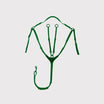 Reins and Auxiliary Reins
Reins and Auxiliary Reins Clipping
Clipping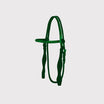 Western
Western Eventing
Eventing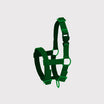 Foals
Foals Reflection
Reflection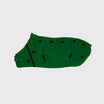 Therapy Products
Therapy Products Boots and Shoes
Boots and Shoes Breeches and Belts
Breeches and Belts Tops
Tops Safety
Safety Competition
Competition Heated Clothing
Heated Clothing Gloves
Gloves Socks
Socks Spurs and Attachments
Spurs and Attachments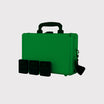 Technology
Technology Whips
Whips Gifts
Gifts Casual Wear
Casual Wear Underwear
Underwear Rider Pharmacy
Rider Pharmacy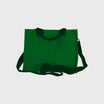 Bags
Bags Books
Books Laundry supplies
Laundry supplies Jewelry
Jewelry Feed and Waterbowls
Feed and Waterbowls Equipment
Equipment Tack Room
Tack Room Pest Control
Pest Control Arena
Arena Horse Toys
Horse Toys Wheelbarrows
Wheelbarrows Yard
Yard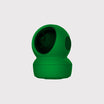 Surveillance
Surveillance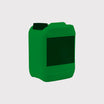 Disinfect
Disinfect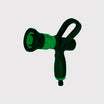 Washing Area
Washing Area Lighting
Lighting Horse Pasture
Horse Pasture Current Conductors
Current Conductors Pole
Pole Insulators
Insulators Energisers
Energisers Gate Handles
Gate Handles Batteries and Accumulator
Batteries and Accumulator Nets
Nets Grounding
Grounding Tools
Tools Fencing Security
Fencing Security Wolf Defense
Wolf Defense Fencing Sets
Fencing Sets Fence locks
Fence locks Dogs
Dogs Cats
Cats Rodents
Rodents Dogs Pharmacy
Dogs Pharmacy Cats Pharmacy
Cats Pharmacy Rodents Pharmacy
Rodents Pharmacy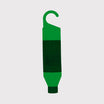 Cattle Pharmacy
Cattle Pharmacy Poultry Pharmacy
Poultry Pharmacy Veterinary Supplies
Veterinary Supplies Cattle
Cattle Sheep and Goats
Sheep and Goats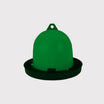 Poultry
Poultry Heat Lamps
Heat Lamps Calves
Calves Marking
Marking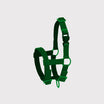 Halters
Halters